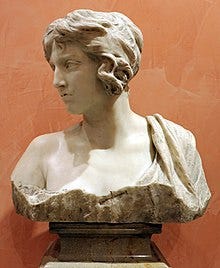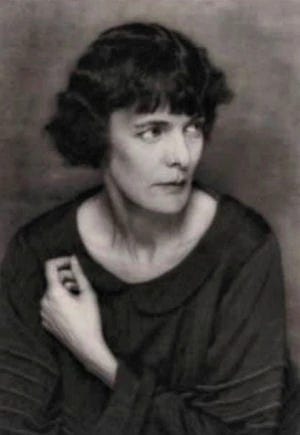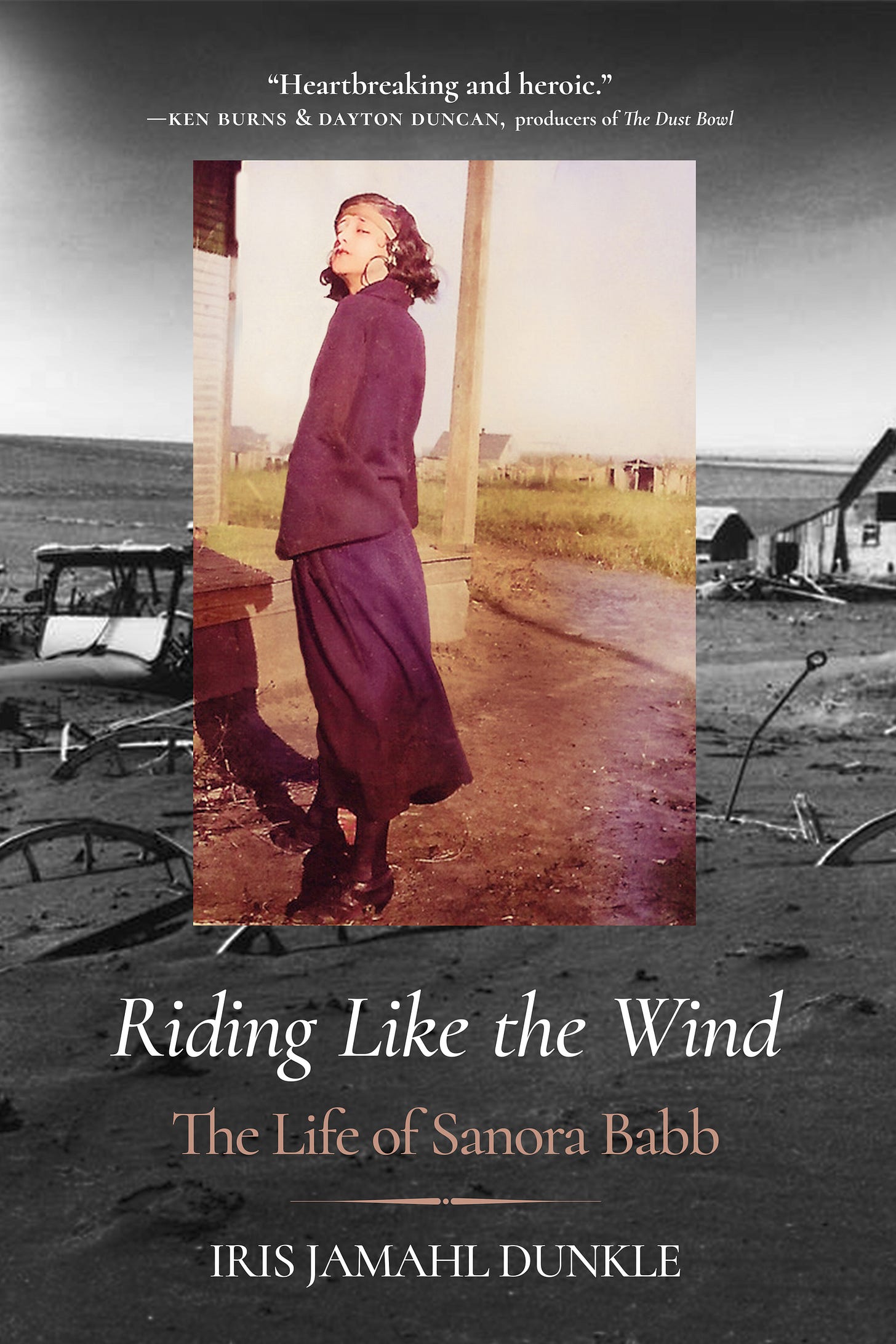Finding Lost Voices: Playing Telephone to Find the Ancient Greek Poet Nossis (300 BCE)
A weekly email that brings back the voices of those who have been forgotten or misremembered.
I’ve always been interested in classical women poets. In fact, I wrote my dissertation on Sappho and her use of Sapphic Modernism (refiguring Homer’s male-centered poetic motifs to speak for the female experience and how her use of that method influenced women poets in the 20th century). So when I got to spend last week with the world-renowned translator Emily Wilson at the Napa Valley Writers’ Conference and I asked her about the topic, I was thrilled to learn about Emily Hauser’s book, How Women Became Poets. In in, Hauser explores the gendered naming strategies in ancient Greek poetic texts and how poets like Sappho, Eurydice, Corinna, and Nossis “defy the cultural conventions of the ‘public’ sphere” and “rewrite the tradition of male-authored literature.” Diving into her book this week, I was thrilled to return to poets I hadn’t studied in decades.

Finding ancient female poets can sometimes feel like playing a game of telephone. You have to listen hard to hear anything at all, and when you do find a voice, usually, it is connected to another. I first encountered the poet Nossis through my study of the modernist poet H.D. (Hilda Doolittle). H.D. read Nossis’s work in the Greek Anthology (a collection of poems, mostly epigrams, that span the Classical and Byzantine periods of Greek literature.) H.D., thrilled to find ancient female poets, translated Nossis’ first epigram as part of the poem "Nossis" found in her collection Heliodora. (H.D. also wrote a number of fragment expansion poems off of Sappho’s poetry as well as essays about Sappho’s influence called Notes on Thought & Vision & the Wise Sappho).
So this week, I want to bring back the voice of the Ancient Greek poet, Nossis (300 B.C.E.). She was from Locris, an ancient city on the Ionian Sea, Found in what is now southern Italy. We are lucky that eleven of her epigrams survive as they create a bridge between a number of Ancient female poets. Each of Nossis’ epigrams utilizes a strong poetic voice and refers to women’s lives and experiences. As scholar Marilyn B. Skinner pointed out, Nossis had a "recognizably female literary voice," and as Skinner has also suggested, Nossis’ works seem like they have been written for a female audience. This is part of the reason why H.D. felt compelled to write back to Nossis in her tradition. It was like a call and response. Like Sappho, Nossis name-drops former poets and their poetic conceits in order to place her name next to theirs. For example, in the following poem, she not only weaves in Sappho’s name, but she also alludes to one of Sappho’s poems (fragment 65).
O stranger, if you will sail forth to Mytilene, of-the-beautiful-choirs,
In order to pick, there, the best flower out of Sappho’s graces,
Tell them I was dear to the Muses, and that the land of Locris bore me.
My name, remember it, is Nossis. Now go! (Greek Anthology 7.718)

When I was in Grad School, so many of the syllabi I encountered were made up of male poets. It makes sense that when it came time for me to find a course of study, I was drawn to a search for female literary ancestors. Only to discover that upon finding these foremothers, they were doing the same thing that I was doing: looking for their own female literary ancestors.
Here is another one of Nossis’s poems.
Melinna herself is here. Look how her pure face
Seems to glance gently at me.
How faithfully she looks like her mother in every way.
Whenever children equal their parents it is beautiful. (Greek Anthology, 6.353)
Somedays, that telephone line we speak into — the history of literature feels empty. It can echo with what is missing, what we can no longer hear. That’s why it always such a thrill to whisper into that line and find a response, especially when that response is ancient, and it bridges women poets from the past into the present.
Do you have a writer who you speak to, or who speaks back to you?
Countdown to Riding Like the Wind: The Life of Sanora Babb
The University of California Press will publish my biography about the author Sanora Babb in just two months and twelve days. PRE-ORDER YOUR COPY TODAY. Beginning in mid-October, I’ll be hitting the road, giving readings from my book. In the next week or two I will be publishing a list of the places where I’ll be reading. Here are just a few. I hope to see you at one of the readings.






